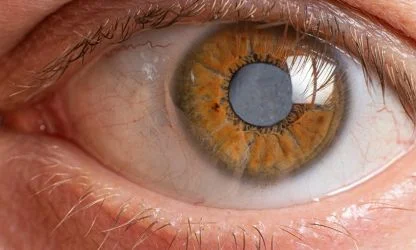Cataract Surgery: Dispelling Common Fears and Misconceptions
Cataract surgery is a common and effective procedure that restores clear vision by replacing the eye's cloudy natural lens with an artificial one. Despite its high success rate, many individuals harbor fears and misconceptions about the surgery, which can deter them from seeking treatment. Addressing these concerns is crucial for making informed health decisions.
Thursday, 17 March, 2025

Understanding Cataracts and the Necessity of Surgery
A cataract is a clouding of the eye's natural lens, leading to blurred vision and, if untreated, potential blindness. Cataracts are primarily age-related but can also result from injury, certain medications, or medical conditions like diabetes. When cataracts interfere with daily activities such as reading or driving, surgical intervention becomes necessary.
Common Fears and Misconceptions
-
Fear of Pain During Surgery
Many individuals worry about experiencing pain during cataract surgery. However, the procedure is typically performed under local anesthesia, which numbs the eye, ensuring that patients feel minimal to no discomfort. The surgery usually lasts between 30 to 45 minutes and is considered painless.
-
Anxiety About Being Awake
The thought of being awake during eye surgery can be unsettling. It's important to note that while patients are awake, they do not see the procedure itself. A sterile drape covers the area, and sedation is often provided to help patients relax. The medical team is trained to support and comfort patients throughout the process.
-
Concerns About Complications
All surgeries carry some risk, but cataract surgery is among the safest procedures, boasting a success rate of approximately 98%.
Serious complications are rare, and most issues, such as swelling or increased eye pressure, are temporary and manageable with medication. Advancements in surgical techniques have further minimized risks.
-
Misconception That Surgery Isn't Urgent
Some believe that cataract surgery can be indefinitely postponed. While early cataracts might not immediately impair vision, delaying surgery can lead to increased difficulties in daily tasks and a higher risk of falls or accidents. Timely surgery not only improves vision but also enhances overall quality of life.
-
Fear of Losing Vision
A prevalent fear is that surgery might result in blindness. In reality, the risk of severe vision loss is extremely low. Most patients experience significant improvement in vision post-surgery, enabling them to resume activities they previously found challenging.
The Procedure and Recovery
Cataract surgery involves removing the cloudy lens and replacing it with an artificial intraocular lens (IOL). The procedure is typically performed on an outpatient basis, allowing patients to return home the same day. Post-surgery, patients may experience mild discomfort, itching, or light sensitivity, which usually subsides within a few days. Eye drops are prescribed to prevent infection and aid healing. Most individuals notice improved vision within 24 to 48 hours, with full recovery occurring over a few weeks.
Real-Life Success Stories
Personal experiences can provide reassurance to those apprehensive about surgery. For instance, a 7-year-old boy from Sierra Leone, born with bilateral cataracts, underwent life-changing surgery that restored his vision, enabling him to engage in activities he previously couldn't enjoy.
Such stories highlight the profound positive impact of cataract surgery.
Conclusion
While it's natural to have concerns about any surgical procedure, understanding the facts about cataract surgery can alleviate unnecessary fears. With its high success rate and the potential to significantly improve quality of life, cataract surgery remains a safe and effective option for those affected by this common eye condition.